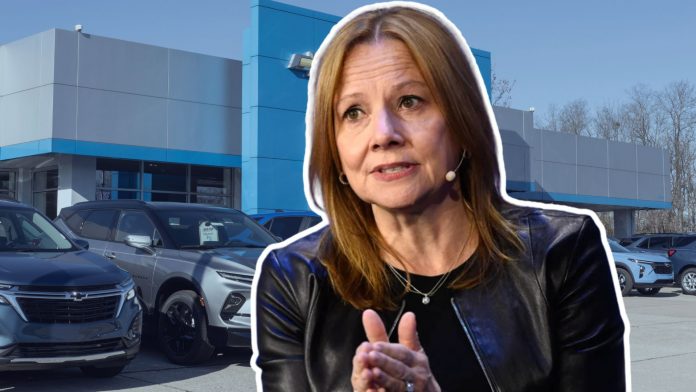General Motors reported a 34.5% decline in second-quarter 2025 net income to $1.9 billion, primarily due to tariffs, warranty costs, and EV inventory adjustments. Total revenue for the quarter came in at $47.1 billion, down slightly from the same period last year, while adjusted operating income (EBIT-adjusted) dropped to $3.0 billion, compared to $4.4 billion in Q2 2024.
Despite these headwinds, GM maintained a 17.4% share of the U.S. market, up 0.7 percentage points year-over-year. The automaker remained the U.S. leader in full-size trucks and SUVs for the sixth consecutive year, and posted record crossover sales, up 16% from the prior year.
EV sales were a standout as Chevrolet ranked as the No. 2 EV brand in the U.S. during Q2, and Cadillac led the U.S. luxury EV segment, with over 25% of its Q2 U.S. sales being electric. GM’s broader EV strategy includes 12 new battery electric models globally through 2027, alongside expanded battery partnerships.
In response to the ongoing cost pressure from tariffs, which had a $1.1 billion net impact in Q2, GM announced a $4 billion investment in U.S. manufacturing to add 300,000 units of capacity focused on high-margin pickups, SUVs, and crossovers by 2027. The initiative is designed to reduce exposure to import tariffs and meet strong domestic demand.
Adjusted automotive free cash flow was reported at $2.8 billion, and GM reaffirmed its full-year 2025 guidance, with EBIT-adjusted expected between $10 billion and $12.5 billion.
CEO Mary Barra emphasized GM’s focus on cost discipline, flexible manufacturing, and expanding digital services, including OnStar and Super Cruise, the latter of which doubled its fleet year-over-year, with more than 500,000 vehicles enabled by Q2.
Here’s why it matters:
GM’s robust sales and margin gains despite tariff-related profit pressures reassure dealers of continued strong vehicle demand, especially for trucks, SUVs, and EVs. The $4 billion U.S. plant expansion signals future inventory growth, reducing supply risk from tariffs. Increased EV market share and new model launches provide dealers with compelling product portfolios to meet evolving consumer preferences. Dealers should also anticipate opportunities arising from GM’s growing digital and software services, which will offer new revenue streams in aftersales and customer engagement.
Key takeaways:
- Q2 net income falls 35%, revenue and adjusted income beat estimates
Net income declined to $1.9 billion, while EBIT-adjusted dropped 31.8% year-over-year, largely due to a $1.1 billion tariff hit, increased warranty costs, and EV inventory adjustments. - Strong U.S. demand for trucks, SUVs, and EVs
Redesigned models and growing EV sales maintain healthy retail traffic and inventory turnover. - $4 Billion U.S. capacity investment
The expansion aims to boost high-margin vehicle production by 300,000 units by 2027, thereby improving supply and reducing tariff exposure. - EV leadership and future pipeline
GM will add 300,000 units of capacity by 2027 for high-margin vehicles, helping offset tariff exposure and support dealer inventory needs. - Robust liquidity and cash flow
The automaker generated $2.8 billion in adjusted auto free cash flow during the quarter and is expanding digital offerings like Super Cruise and OnStar, creating new aftersales engagement tools for dealers.
atd_callout id=”1″]



